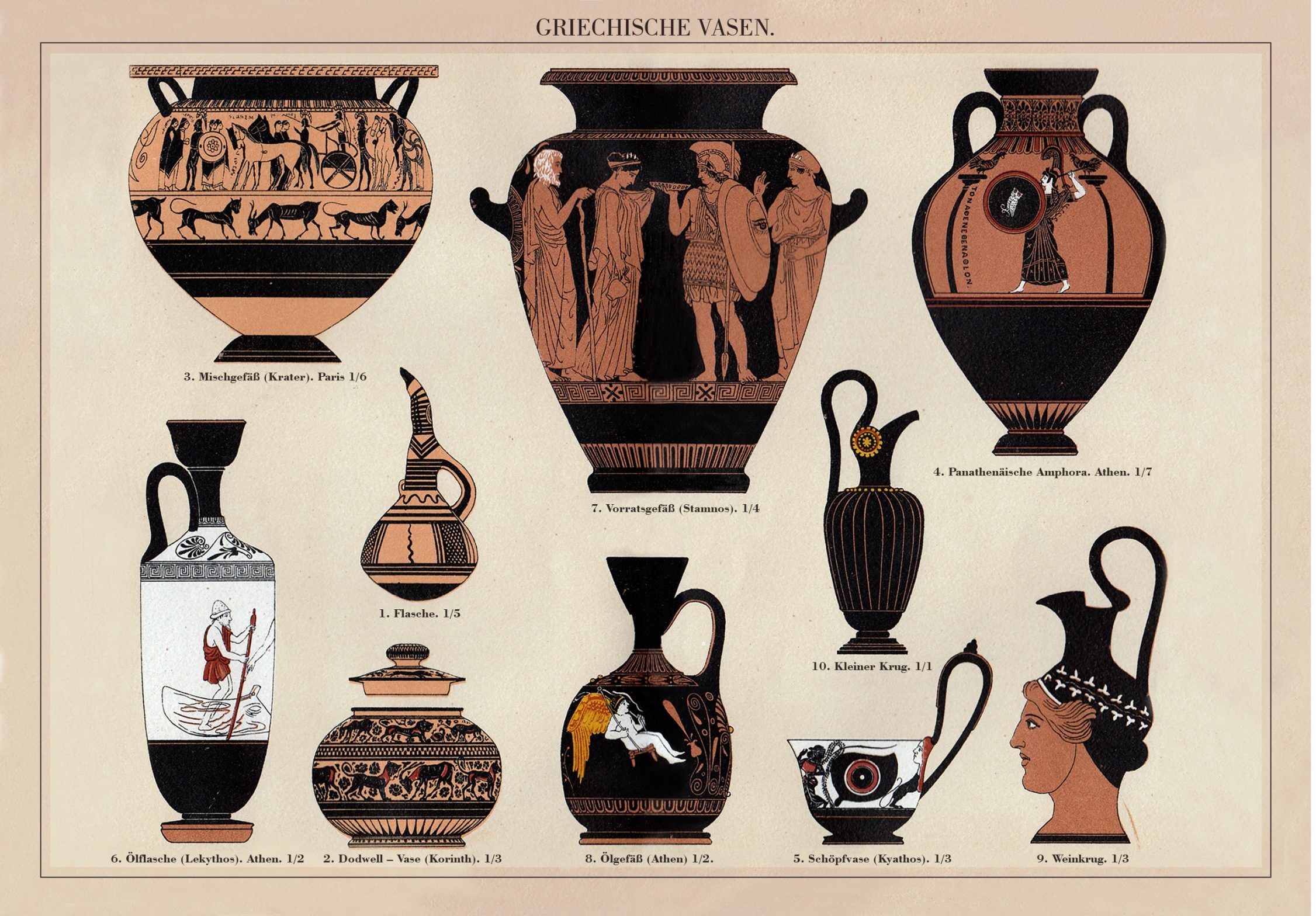
Look at the amazing journey of Greek art by seeing how Greek pottery changed over time.
Key Highlights
- Greek pottery is famous for its beautiful shapes, detailed designs, and stories from mythology. It gives us a good picture of ancient Greek culture.
- From the early Geometric period to the Classical and Hellenistic times, Greek pottery changed a lot. These changes show the growing artistic ideas and new technologies.
- By learning about the development of Greek pottery, we can better appreciate the art and cultural values of this ancient society.
It starts with the simple designs of the early period and moves to the more refined looks of the classical period. Greek pottery shows important details about art, culture, and tools used in ancient Greece. Join us to learn the stories behind these beautiful pottery pieces and their lasting impact.
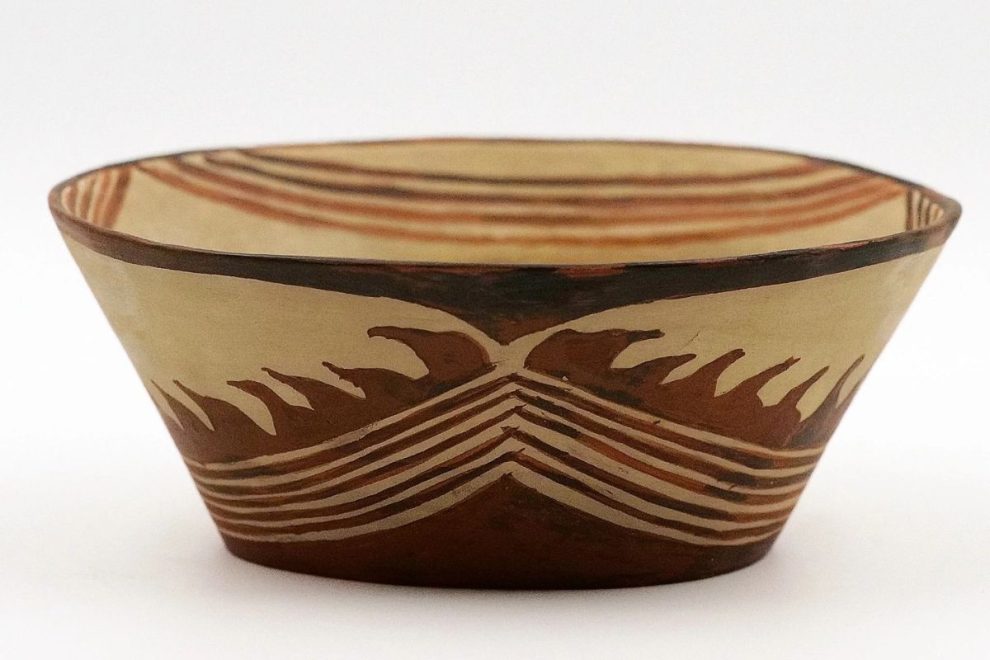
The Origins of Pottery in Greek peninsula
The story of Greek pottery starts in the Neolithic time. During this time, people made their first pots to meet everyday needs. These early pots were useful and showed how creative people could be. As time went on, Greek pottery changed a lot. It evolved from basic clay pots to lovely pieces of art that still impress people today.
Greek pottery designs gives us a special look at the ancient civilization that created it.
The influence of Neolithic advancements
Neolithic advancements were a crucial step in the history of pottery, including pottery in mainland Greece. When farming began and people started to live in one place, they needed storage containers for leftover food. This need made clay pots popular everywhere. These early pots were practical. They focused on use instead of beauty. Clay was easy to find on the Greek peninsula. It was shaped and fired to create strong pots that matched the simple needs of Neolithic people. The shapes were basic, often resembling gourds, bowls, and jars, with little decoration. Even in these simple forms, we can see the beginning of Greek pottery’s long-lasting effect.
Transition from utilitarian to ceremonial uses
As societies changed from the Stone Age to the Bronze Age, pottery changed a lot. It was no longer just for daily tasks. Now, it also had special meanings. Pottery became important in burial rituals. Beautifully decorated pieces were placed in ancient tombs. They served as grave markers and offerings for the dead. This change was important for how Greek pottery developed. It started to show cultural beliefs and values, moving beyond everyday use.
Minoan pottery is known for its great skill and designs that come from the sea. It had a big impact on Greek potters. Minoan styles featured beautiful sea animals, plants, and unique patterns. These styles spread to mainland Greece. This inspired local artists and changed Greek ceramic art. The way these artistic ideas moved between cultures shows how ancient societies shared their creativity and combined their art.
During this time, people also made pottery for ceremonies. Big kraters were used to mix wine at social events called symposia. They displayed detailed pictures of myths, sports events, and everyday life. This change shows that pottery became more important for social and ritual activities. It became a way to tell stories and show the beliefs of the Greek people.
Explore the elegant vessels crafted for perfumes, aromatic oils, cosmetics, and ceremonial uses.
Explore the types of pottery in ancient Greece used for storage, transport, cooling wine, and tableware.
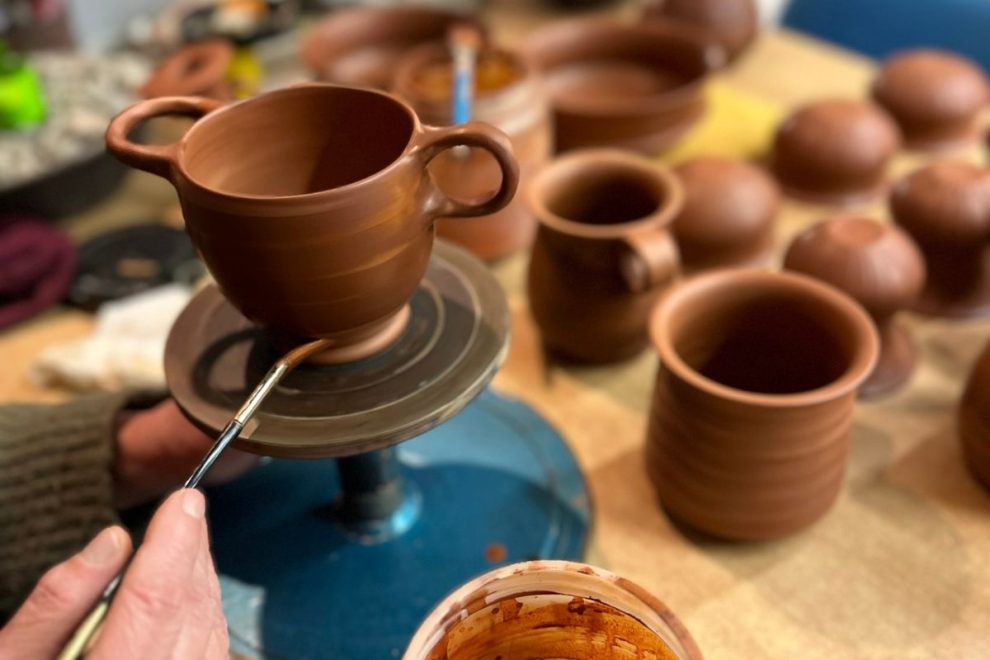
Technological Innovations in Greek Pottery Making
Greek potters got better at their craft as time passed. They brought in new tools that changed how they made pottery. The potter’s wheel and improved oven designs were important changes. These updates allowed potters to make smoother shapes and try new ways to design their pieces.
Introduction of the potter’s wheel
The potter’s wheel came probably from the Near East during the 2nd mill BCE and was widely spread all over Greece before the 8th century BCE. This new tool changed Greek pottery for good. It allowed potters to make vases that were more balanced, had thinner walls, and looked nicer. By using the spinning of the wheel, workers could make more shapes faster and more accurately.
The potter’s wheel helped create pottery in standard sizes. This made it quicker to make pottery and led to many pottery workshops. At the same time, kiln designs got better. These improvements helped potters fire their pottery well and achieve the colors and finishes they wanted. Together, the potter’s wheel and better kilns helped create the well-known vase shapes seen in Greek pottery.
Now that potters could create thinner walls, Greek pottery changed from heavy and practical designs. It started to focus on elegant shapes that looked beautiful. This time led to famous vase shapes like the amphora for wine and olive oil, the kylix, a shallow drinking cup with two handles, and the hydria, a three-handled jug for water. These shapes became popular in Greek culture and influenced pottery styles all over the Mediterranean.
Discover our decorated wheel-made items!
Evolution of kiln designs
The changes in kiln designs were important for the special look of Greek pottery. In the Bronze Age, kilns became better, moving from simple open fires to more advanced updraft kilns. These upgrades allowed potters to manage temperature and oxygen more effectively. This gave them the chance to get the colors and finishes they wanted. Techniques like black-figure and red-figure pottery, which required careful firing, would not have worked without these improved kilns.
Black-figure pottery started in the 7th century BCE. It showed black shapes painted on red clay. Making this pottery took three steps. First, the clay changed to red. Next, a black slip was added. Then, the clay turned red again. Potters used a special technique to create the strong contrast between the black figures and the red clay.
As kiln designs improved, red-figure pottery showed up in the late 6th century BCE. This type switched the colors of black-figure pottery. In red-figure pottery, the figures kept their red clay color while the background was painted black. This method required careful firing because the red figures were exposed and could easily change color. So, changes in kiln designs were important for the great art and new ideas that made Greek pottery unique.
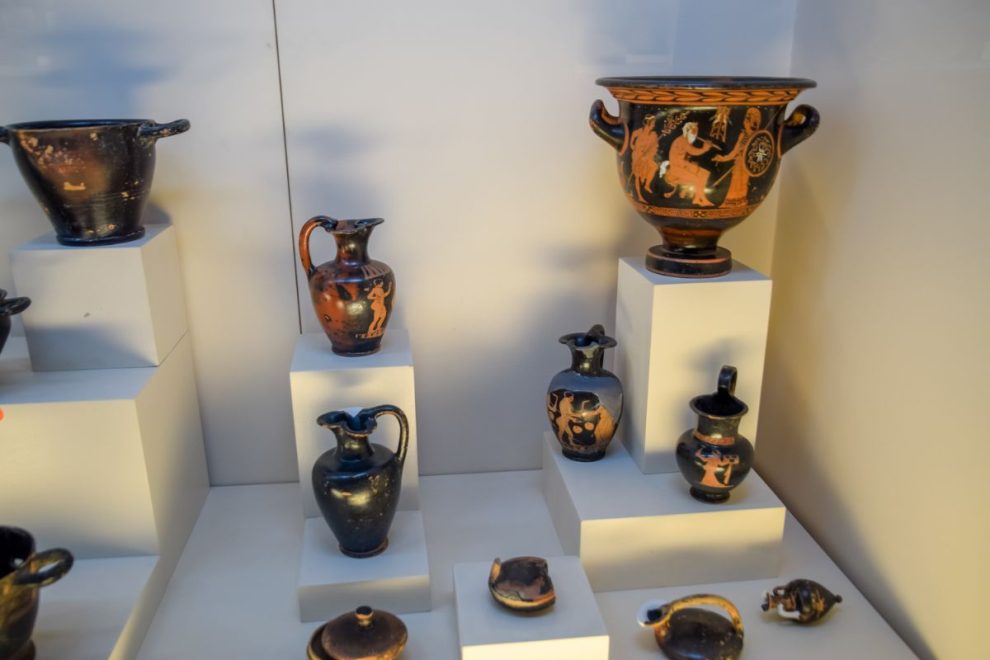
Different Times of Greek Pottery
Greek pottery has a long and interesting history that has several styles. Each style shows how art developed over time. It began with simple geometric shapes in the Protogeometric style. Then it progressed to the Orientalizing period, where designs became more detailed and began to tell stories. In the Classical period, pottery highlighted human figures and myths, showing these beautifully on vases. These changes in style help us learn about the culture and history of each era.
Tracing the development of Greek pottery throughout Ancient Greek history.
The development of Greek pottery tells us about Ancient Greece. It shows how politics, culture, and art changed over time. In the Geometric period, we see simple designs. Then, in the Classical era, art became more realistic. Each stage gives us a unique look at how the ancient Greeks thought. The Geometric period, from around 900 to 700 BCE, had special styles. It was famous for detailed geometric designs like meanders, spirals, and checkerboards. These shapes often covered the entire vase. They show a love for organization. Before this, the Protogeometric style used simpler shapes like circles and lines, beginning this art form.
As Greek art entered the Archaic period (about 700-480 BCE), pottery began to include more figures. These human figures started out simple but became more real and detailed over time. During this period, influences from regions like Egypt and the Near East came in. New designs, such as lotus flowers, sphinxes, and griffins, showed up. This blend of cultures added variety to Greek pottery. It helped create stories and mythological artwork in later years.
In Classical and Hellenistic times, Greek pottery improved a lot. It showed realistic details and a strong focus on human feelings. If we learn about the history of these styles, we can understand how culture influenced Greek pottery and its lasting effect.
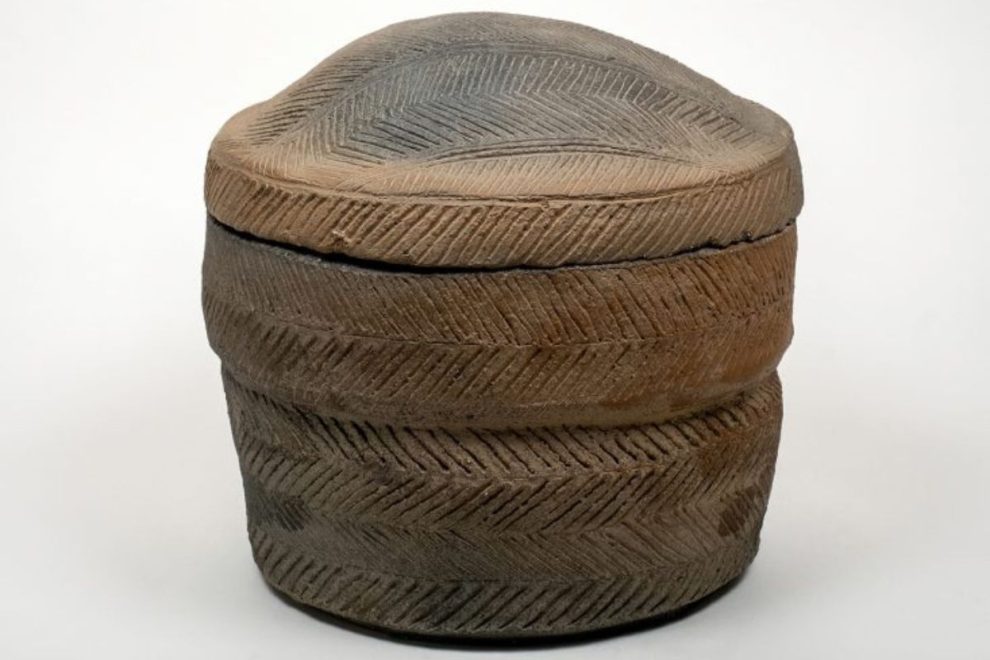
The Geometric Period and Its Significance
The Geometric period went from the 10th to the 8th century BCE. This time was important for Greek pottery. A new style of art started to show up during this period. This style reflected the values and tastes of the people. The pottery had special geometric patterns. This time also prepared the way for future art forms, like those showing figures and stories that became important in Greek pottery.
Emergence of geometric patterns
In ancient Greek pottery, new geometric patterns changed art in a big way. This happened during the Geometric period, from the 9th to the 8th century BC. Pottery showed intricate designs with shapes like circles, triangles, and meanders. These shapes were often painted in dark colors on light pots. They marked the start of a new style in Greek ceramic art. The geometric patterns reflected changes in society and art at that time. They laid the groundwork for the rich art that later defined Greek pottery. This shift to more detailed and meaningful designs opened the door for the creative growth that followed in Greek pottery.
Symbolism in geometric designs
Understanding symbols in ancient art can be tricky, and many people have different opinions. Still, experts believe that the geometric patterns on pottery from the Geometric period held important cultural and spiritual meanings. Some patterns, like the winding design, are connected to ideas such as eternity, the circle of life, or the movement of water. Others, like the swastika, showed up in several ancient cultures and might represent good fortune or the sun. The way geometric patterns are placed and repeated may also have meanings. For instance, adding horizontal bands on a vase could represent a view of life that divides earthly things from higher ones. Geometric art was all about abstract designs and symbols. It allowed the ancient Greeks to express their views about the world, their beliefs, and their culture. These early ceramic pieces show us how a society was open to new ideas in art and thinking. The Geometric period had a lasting effect on Greek pottery. It helped shape its future and add to the beauty of this art form.
Discover our prehistoric handmade creations.
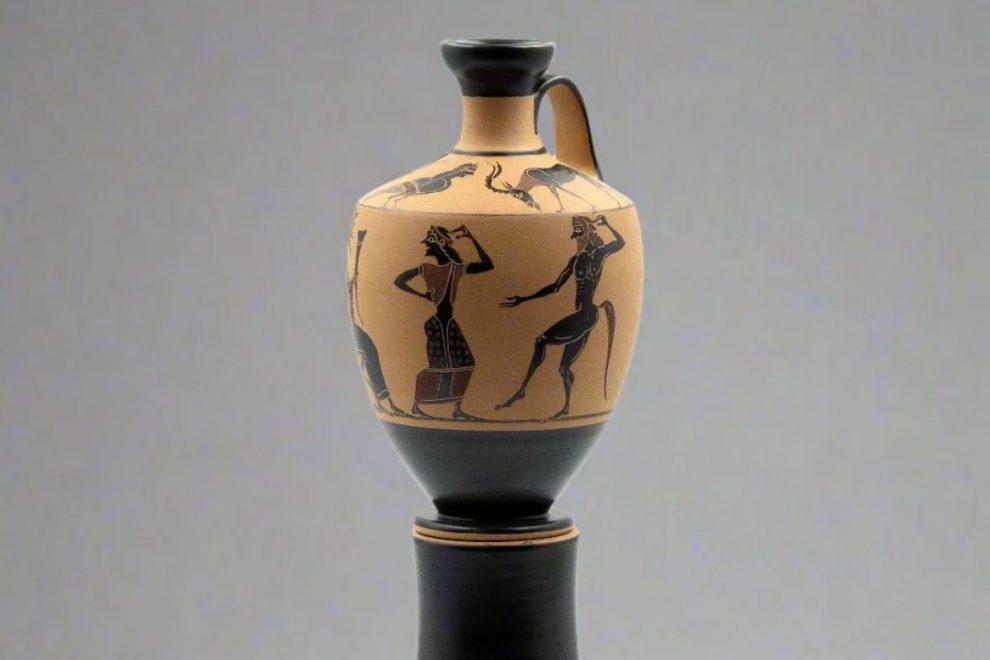
The Old Time and the Growth of Stylish Pottery
The Archaic period began around the 7th century BCE. This time was key for Greek art. Artists started to shift their style. They moved from using only abstract designs. Instead, they began to show people and stories on their pottery. This brought fresh ideas to their clay work. It prepared the way for the art changes that came in the Classical period.
Development of black-figure pottery
The development of black-figure pottery marked a big step forward in ancient Greek art. This style began around the late 7th century BC and changed how pottery was decorated. Black-figure pottery used a black paint on a clay pot. The artists would cut into the black layer to show the red clay underneath, making strong contrasts. This method allowed for more detailed designs and clear pictures of people, animals, and stories from myths. The black-figure style became very popular during the Archaic period. A well-known piece, the Francois Vase, shows the skill and creativity of this practice. The growth of black-figure pottery shows how talented ancient Greek artists were at telling stories on pots.
Introduction of red-figure pottery
The arrival of red-figure pottery changed ancient Greek art in a big way. This new method began around 530 BC. It allowed artists to create more detailed pictures of people and scenes on pottery. Instead of the older black-figure style, where figures were painted in black, red-figure pottery used red figures on a black background. This change helped artists show feelings and details more clearly. Red-figure pottery quickly became popular because it was great for telling stories and showing myths. It became very important in ancient Greek vase painting. Its arrival changed how stories and ideas were shared through art in the ancient world.
Discover our exclusive collection that consits of sophisticated yet eccentric collectible pieces.
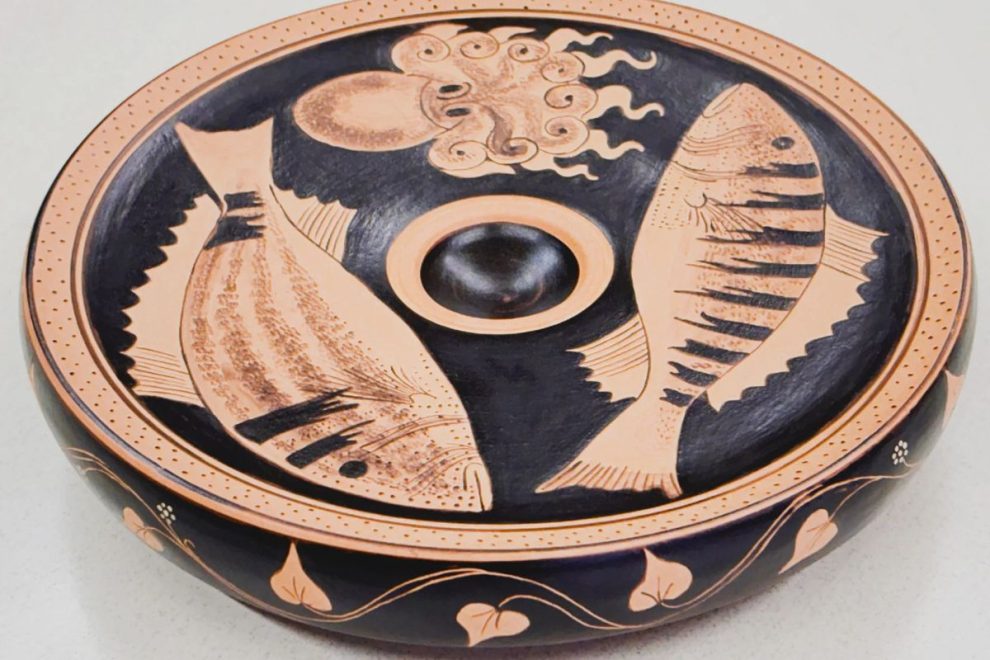
The Classical Period and the Hellenistic Period
The Classical and Hellenistic periods, from the 5th to the 1st century BCE, were a peak time for Greek art. Artists of this time had great skill in showing the human body, nature, and feelings. Greek pottery also got much better during these years. It became more lovely and detailed, showing the changes in art during these important times.
Discover our black glazed ware, a type of ancient Athenian fine pottery produced in the Classical and Hellenistic Periods.
Mastery of naturalistic figures and scenes
The Classical period is often seen as the best time for Greek art. During this time, artists got very good at making lifelike figures and scenes in vase painting. They worked hard to show the beauty of the human body. You can see this in their graceful poses, balanced designs, and careful body details. The contrapposto pose, which shows the body in a relaxed position, made their vases look more real and lively. Classical pottery often showed scenes from Greek stories. This showed that the artists understood their culture well. They expressed deep emotions with small gestures and facial expressions. They used methods like foreshortening and overlapping shapes, which made the images feel real. This pulled the viewer into the story. Panathenaic amphorae were large jars given as prizes during the Panathenaic Games. They show the art skills of the Classical period. Their size and detailed images of sports and stories capture the spirit of this time.
Influence of political changes on pottery styles
The Hellenistic period followed the Classical era. During this time, there were significant political changes due to Alexander the Great and the breakup of his vast empire. These changes impacted Greek art, particularly pottery. In the Hellenistic period, artists paid more attention to feelings and dramatic stories. They also liked the unusual. Hellenistic pottery often displayed scenes from daily life, theater, and many other topics. This marked a shift from the perfect world of Classical art. Artists began to show stronger feelings such as sadness, joy, and excitement. You can notice this in their lively faces and dynamic poses. They used bright colors, beautiful decorations, and dramatic effects to represent the new art styles of that time. Unlike Classical pottery, which mostly was from Athens, the Hellenistic period saw other art centers grow. Places like Alexandria in Egypt and Pergamon in Asia Minor started to shine. Each center made its own style. This change added more variety to art and mixed Greek style with local customs.
How did Greek Pottery Iinfluence Modern Art?
Greek pottery has a big effect on art today. Its styles and methods inspire many artists around the world. You can see this in the works of artists like Picasso and many current ceramic makers. The way Greek pottery impacts shapes, designs, and stories is still meaningful in art now.
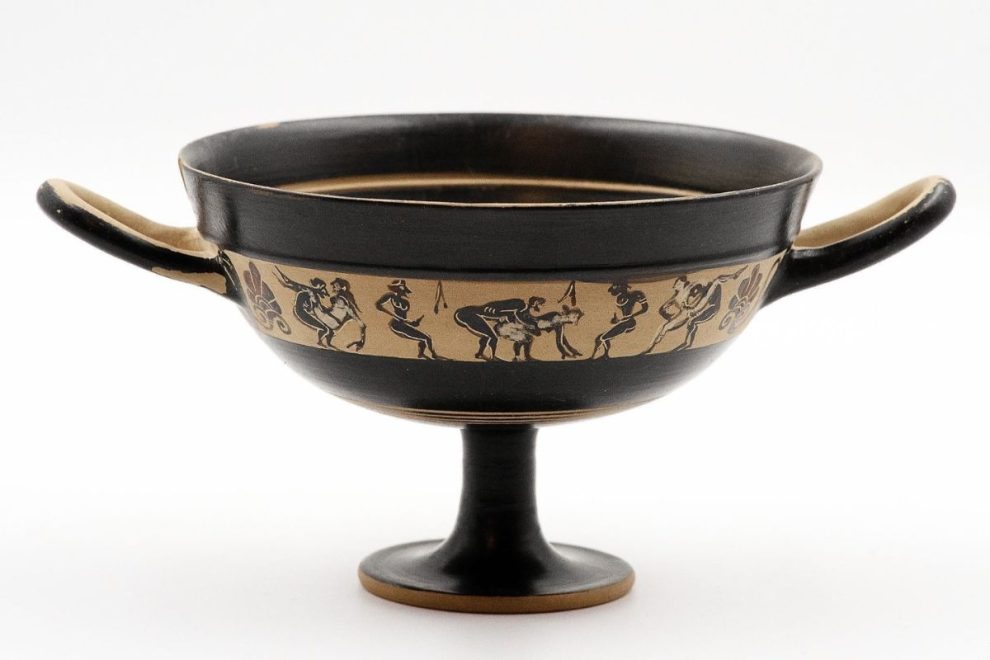
The Role of Pottery in Ancient Greek Society
Greek pottery is not only pretty; it was very important in Ancient Greek society. It met many practical, social, and religious needs. People used pottery for everyday tasks at home and for special ceremonies or burials. This pottery helps us understand the daily lives, beliefs, and social groups of the ancient Greeks. The strong pottery means that even the broken pieces provide a lot of information in the archaeological record of ancient Greece.
Everyday uses and functions
Ancient Greek pottery had many everyday uses apart from being art. It was used for storing oil and grains, and it helped mix and serve wine at parties. Pottery was everywhere in Greek homes. These items were not just things to buy; they were important parts of daily life. They showed what the Greeks found useful and beautiful. Also, pottery was important for burials. Some vessels were made to act as grave markers or gifts for the dead. The strength and usefulness of clay pottery meant it was used often at home and during special events. This shows how it helps us understand the customs and ways of life in ancient Greece.
Discover our one-of-a-kind functional serveware items.
Ceremonial and burial practices
Greek pottery was not just for use. It was important in ceremonies and burials. It showed the beliefs and customs of ancient Greece. Large kraters, for example, were decorated with scenes from myths or drinking parties. These pieces were key during feasts. They symbolized plenty, welcome, and shared joy. Lekythoi sometimes showed sad farewells. They were left in ancient tombs as gifts for the dead. This showed the idea of life going on after death.
- These burial items often showed scenes of sadness. This included women crying over a funeral bed or mythic figures like Charon, who took souls to the afterlife.
- The strong images on funerary pottery show how important the afterlife was in the beliefs of ancient Greeks.
Discover our exclusive functional urn collection.
Pottery was very important in religious ceremonies. Small vessels or figures were used as gifts for gods at temples and holy places. People gave these to show thanks or to ask for help. This use of pottery in religion shows how much it mattered in ancient Greek culture.
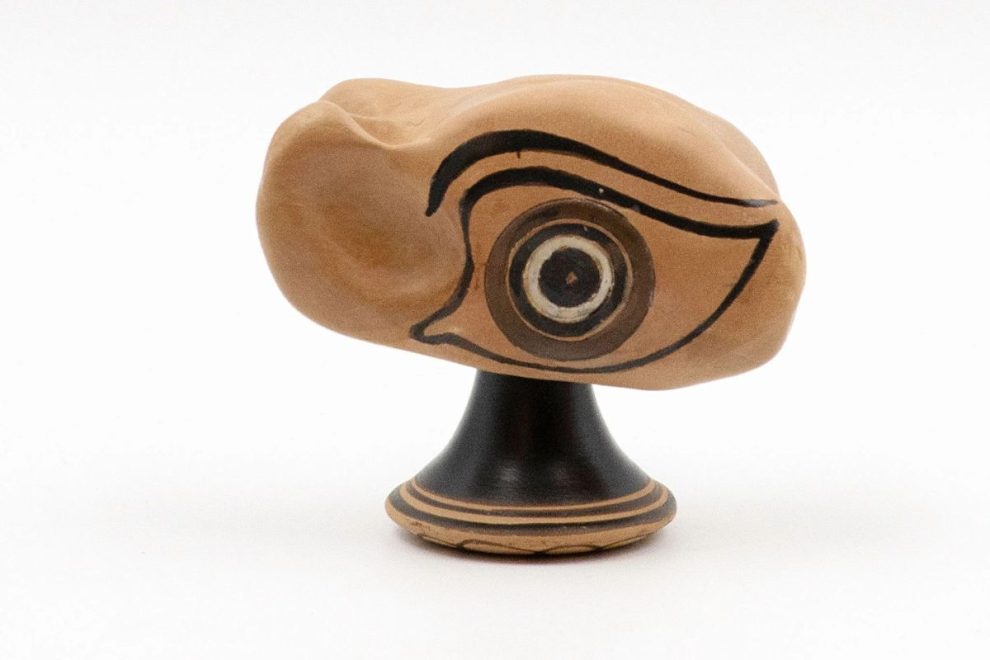
Final Reflections
The development of Greek pottery styles is a fascinating story. It reflects the culture, technology, and art of ancient Greece. Greek pottery started with ideas from early times. Then, it displayed talented natural-looking figures during the Classical and Hellenistic periods. This pottery has greatly influenced art history. Greek pottery changed from being useful to being special for ceremonies. The development of potter’s wheels was important for this change. The geometric designs also had deep meanings. When we learn about the different times and styles, we can better understand ancient Greek society. It also shows us how this old art form still influences modern art today.
To customize your order email us at attickblack@thetis.gr
To place your order visit our eshop https://theatticblackshop.com/
